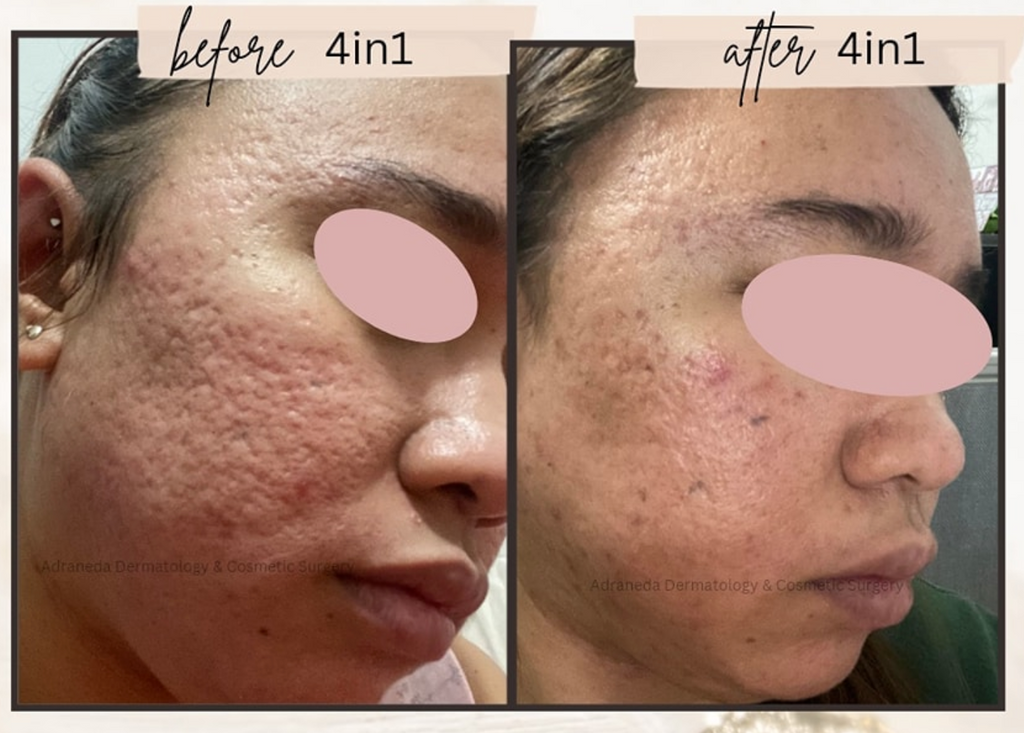Effective Solutions for Acne Scars: How to Attain Clearer Skin
Discovering Skin Disease: Dealing With and identifying Acne Scars for Healthier Skin
Acne marks stand for a substantial concern for individuals looking for to maintain healthy skin, as they can influence both look and self-confidence. Understanding the various kinds of scars, from atrophic to hypertrophic, is vital for identifying appropriate therapy choices.
Understanding Acne Marks

The body's natural healing procedure can cause either atrophic scars, which look like depressions in the skin, or hypertrophic scars, which are elevated and arise from overproduction of collagen. Additionally, the mental toll of acne marks need to not be ignored; numerous people report sensations of shame, anxiety, and reduced self-confidence. This psychological worry can affect social interactions and total lifestyle.
Dealing with acne scars needs an extensive understanding of their formation and impact. Awareness of the capacity for long-term repercussions connected with without treatment marks can encourage people to look for ideal treatments. Early intervention and efficient monitoring techniques can substantially enhance skin look and enhance emotional resilience, emphasizing the significance of understanding the complexities bordering acne marks.
Sorts Of Acne Marks
Acne marks can be categorized into distinct kinds, each displaying special attributes and calling for details therapy techniques. acne scars treatment. The main kinds of acne scars consist of atrophic, hypertrophic, and keloid scars

Hypertrophic scars, in comparison, are raised over the skin level and are the result of too much collagen production during the healing procedure. They normally stay within the limits of the initial acne lesion. Keloid marks are comparable but prolong past the original injury website, creating larger, raised locations that can be agonizing or itchy.
Comprehending these kinds of marks is important for choosing ideal treatment alternatives. Various scars may respond much better to certain treatments, such as laser therapies, fillers, or medical treatments, emphasizing the relevance of a tailored approach to acne scar management.
Identifying Your Marks
Acne marks typically fall right into 2 groups: atrophic and hypertrophic scars. These can additionally be classified into ice-pick scars, boxcar marks, and rolling scars, each exhibiting distinctive characteristics and requiring different techniques for analysis.
Hypertrophic marks, on the various other hand, are raised and occur due to extreme collagen production during the recovery procedure. Recognizing the specific features of your scars-- such as depth, width, and texture-- is essential for proper identification (acne scars). Additionally, consider the distribution of scars throughout your skin, as this can show the intensity and duration of the acne condition
Involving with a dermatologist can offer important insights right into the nature of your scars, aiding in the differentiation in between numerous types. A complete understanding of your scars will ultimately lead to an extra customized and efficient treatment plan, ensuring a more clear and healthier complexion.
Therapy Choices Available
Recognizing the certain kind of acne scars existing on your skin prepares for checking out reliable treatment alternatives. Typical types of acne marks include atrophic (depressed), hypertrophic (elevated), and post-inflammatory erythema.
For atrophic scars, alternatives such as chemical peels, microneedling, and laser resurfacing are commonly made use of. Chemical peels make use of acids to remove the external layer of skin, advertising new cell growth.
Hypertrophic marks can be treated with corticosteroid shots to flatten the mark or laser therapy to minimize redness and enhance look. Silicone gel sheets and pressure dressings may likewise help in taking care of raised marks.
Additionally, original site dermal fillers can briefly fill out clinical depressions from atrophic scars, while surgical excision might be suitable for serious instances. Each treatment choice has its considerations and advantages, making it vital to seek advice from with a dermatologist. They can supply visite site tailored recommendations based on the kind and extent of your scars, as well as your skin type and general wellness.
Tips for Avoidance
Effective prevention strategies can significantly reduce the likelihood of creating acne marks. Making use of non-comedogenic items aids protect against clogged up pores, which can worsen acne.
Preventing need to stand out or choose acne lesions is essential, as this can lead to much deeper skin damages and enhance the risk of scarring. Rather, take into consideration utilizing a cold compress or over-the-counter therapies to minimize swelling and soreness.
Sunlight security is another essential element of prevention; ultraviolet (UV) rays can dim scars and prevent the recovery process. Using a broad-spectrum sun block with at the very least SPF 30 daily can protect the skin and advertise even recovery.
Finally, maintaining a well balanced diet rich in vitamins, antioxidants, and minerals sustains skin health and recovery. Staying moisturized and managing anxiety degrees can likewise play a significant function in reducing acne flare-ups. By applying these like it techniques, people can considerably decrease their chances of creating acne scars.
Final Thought
In conclusion, understanding and determining acne scars is crucial for effective treatment and achieving healthier skin. Numerous kinds of acne marks, including hypertrophic and atrophic scars, necessitate specific treatments customized to private demands.
The body's natural recovery procedure can result in either atrophic marks, which appear as clinical depressions in the skin, or hypertrophic marks, which are elevated and result from overflow of collagen. They are additional split right into three subtypes: ice pick scars, boxcar scars, and rolling marks. Acne marks usually drop right into 2 groups: hypertrophic and atrophic marks. These can further be classified into ice-pick marks, boxcar marks, and rolling marks, each displaying unique qualities and requiring different approaches for analysis.
Various types of acne marks, consisting of hypertrophic and atrophic scars, necessitate details treatments tailored to individual needs.